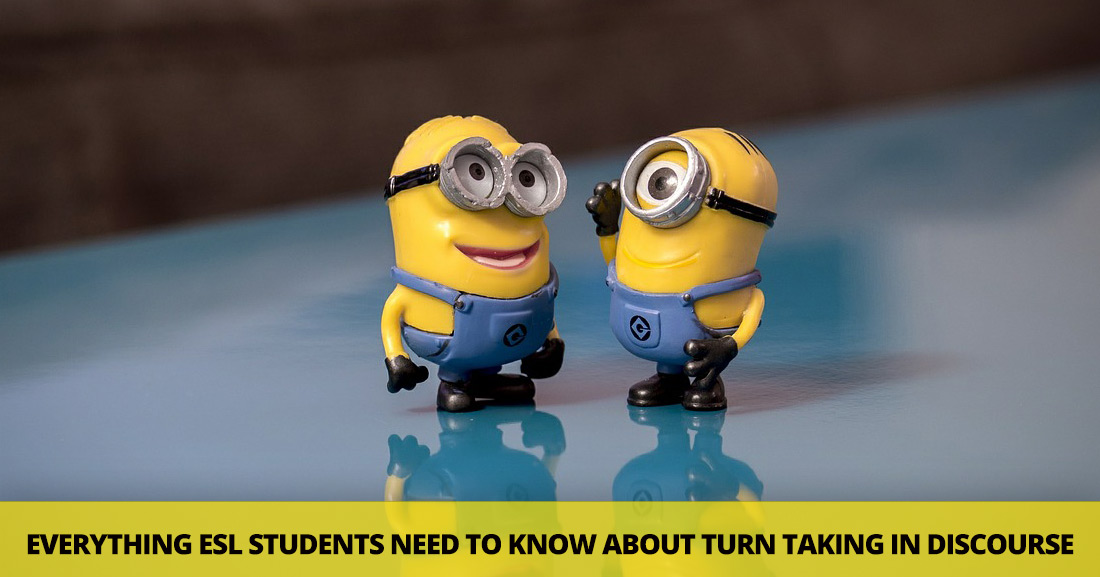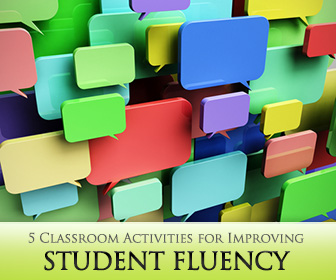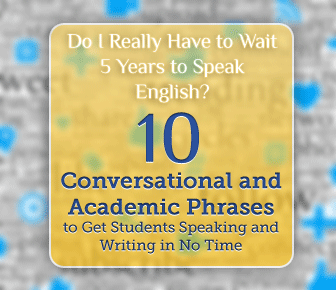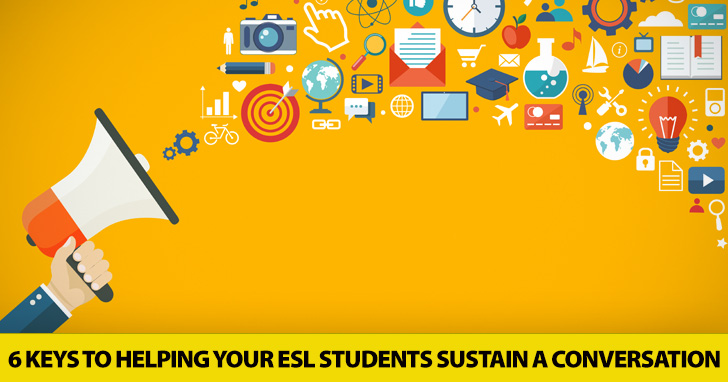Everybody Take Your Turn: Everything ESL Students Need to Know about Turn Taking in Discourse


We may not think about it often, but timing is important in language use, and having good timing is part of having good fluency in a foreign language. Fluent students produce sentences with the correct stress and timing as well as contribute to conversations at the appropriate moments. They do not have long pauses in what they are saying or wait long periods before jumping into a dialogue. It only helps your ESL students when you take time to talk about fluency. And when you are ready to do that, here are five classroom activities you can use to help your students improve theirs.

If your students struggle with jumping into conversations at the right moments, try this challenging activity to get them speaking up sooner. Write a dialogue between two people, and then perform that dialogue with another native speaker before coming to class. When you do, record only your partner’s speech, leaving your voice out of the recording. Then, bring the dialogue and recording to class. Give each student a copy of the dialogue, and then have students take turns reading their part of the dialogue along with the recording of the native speaker. If your students are too slow to speak up, the recording won’t hold the conversation for them. If they are able to keep good time with the recording, they are showing signs of good fluency.
To improve student fluency within sentences, try doing chants and rhymes as a class. Depending on the age of your students, you may want to go with anything from nursery rhymes to popular poetry or lyrics to current hits. Give each student a copy of the rhyme you will be using. Then stand in front of the class and read the rhyme for them. The next time through, your class should read along with you. Don’t modify your speed or intonation to aid your students. The goal in this activity is for them to keep up with you as you read. This will help them mimic your pace and intonation as you read aloud, which in turn will help them with their fluency when they speak. You can also do this with prose.
No, you won’t be encouraging your students to jump on a classmate making a huge pile of arms and legs. To help student fluency at the sentence level, try piling words and phrases on to a simple sentence. Start with a basic sentence, something as simple as you can make it.
John runs.
Say the sentence for your students and then have them say it back to you. If they can read the sentence comfortably, add a word or phrase.
John runs away.
Say the new sentence and have your students repeat. Once they are comfortable with the expanded version, add another phrase.
John runs away from the wolf.
Repeat the process and have students repeat the sentence until they can comfortably say it fluently. Keep piling on words and phrases, one at a time, until you can’t make the sentence any longer.
John runs away with his arms flying wildly from the rabid wolf with sharp claws who is chasing him to get his dinner.
With each addition, give students time to practice reading it aloud until they can say the sentence with fluency. Starting small gives students a chance to cement the pace in their minds before you make the sentence longer and longer. You can make this activity fun, too, by adding inventive or silly phrases to your sentences.
ESL teachers often work hard to recruit conversation partners for their students. If you are lucky enough to teach in a school that has native speaker classes as well as ESL classes, you may have a great resource at your fingertips. Pairing your students up with native speakers to talk, either on given topic or one of their choosing, is very helpful for nonnative speakers. Sometimes though, it’s good to take these conversations to the next level. Instead of pairing your students one on one with a native speaker, group two native speakers with one or two of your ESL students. Make sure everyone knows that the native speakers are to talk with each other as well as with your ESL students. Then, challenge your students to jump into the conversations at appropriate moments rather than just observe the conversation between the native speakers. This may be challenging and possibly intimidating for your students, but it will ultimately get the words rolling off their tongues more easily.
No one is ready with the perfect words all of the time every time. Once in a while, even the greatest talkers need a moment to collect their thoughts. Teaching your students the strategies that English speakers use as conversational place holders will give your ESL students the correct tools for when they need a moment before speaking. Different languages use different conversation holders. The most popular in English is probably “um…” Native speakers use this sound to indicate that they are not finished with what they have to say. Without realizing it, English speakers use this phrase while they think of responses, questions and comebacks. Though “um” is not appropriate for speeches or formal presentations, your students can put this phrase to good use in casual conversations when they need a moment to think. The phrases ah and hmmm will also fit the bill as conversational place holders, and giving your students a chance to use these natural speech tools will help them become better overall speakers.
How to you encourage them to overcome it?


